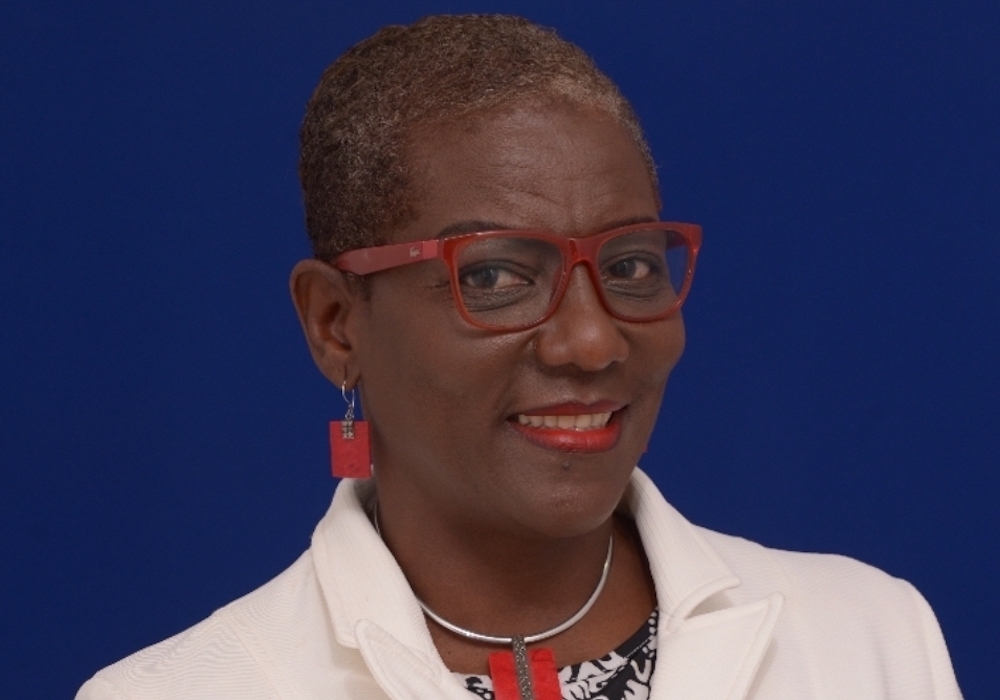A “Kriol Soldier” Celebrates Afro-Caribbean Heritage
Posted on October 24, 2023

With its evocative first line, “Kriol is both my window and my door” (“Krioul dah mai winda an mai duo tugeda”), Emiliana Bernard-Stephenson’s “Kriol Soldier” draws the reader into a celebration of a language that has sometimes been marginalized.
San Andrés–Providencia Creole is a language with roots in English and several West African languages. It originally formed on the islands during and after the transatlantic slave trade as a way for enslaved Africans of different linguistic backgrounds and British enslavers to communicate. Over the course of generations, it evolved into a distinct Creole language with an established vocabulary, grammar, and syntax. There are currently about twenty to thirty thousand speakers of the language worldwide, including in mainland Colombia, Panama, around the Caribbean, and in the United States.
A young man summarizes the language’s history this way:
We’re fighting so that Creole is in all the institutions. Previously it was considered a dialect because it didn’t have a written form or grammatical rules, but now it can be both written and spoken. There are even books. (Source: San Diego Tribune)
The author’s original language recording of the poem gives a sense of the language’s richness.
Students might be interested in learning some conversational Creole from this video created by students in San Andrés. Although the video is in Spanish, English speakers might still be able to understand the meanings of the Creole phrases.
Meet Emiliana Bernard-Stephenson
To get to know the author, you and your students might watch a video interview in English and Spanish with Teleislas, the regional TV channel for San Andrés and Providencia. The English can be a little difficult to make out, but around forty seconds in, the author talks about moving to the Colombian city Barranquilla as a child, facing mockery from other children, and learning from an inspiring teacher.
At 3:54, Bernard-Stephenson repeats some advice she got from her grandmother and talks about what it’s like to be a woman today:
Normally, as a woman, society wants to trample you. . . . I don’t pay that no mind.
In addition to her work as a writer and journalist, Bernard-Stephenson is also the Colombian ambassador to Jamaica. There are photos from her ambassadorial work on her Instagram page.
“Kriol Soldier” in the English or Literature Classroom
For students of English or literature, it might be interesting to read the poem in English, and then listen several times to the original, keeping the following questions in mind:
- What differences do you notice in sound between the two versions?
- Are you able to understand any of the Creole words? (Use the translation, and keep in mind that many words have similarities to English.)
- Are there any possible differences in meaning between the poem in the original language and its translation?
Pairs Well with . . .
Students can read “Kriol Soldier” alongside other culturally affirming literature, from Maya Angelou’s “Still I Rise,” available in a video reading with the poet’s introduction, to Erykah Badu’s “Ode to Hip-Hop,” to the poems translated from other marginalized languages listed in “Related Reading” below.
Possible Extension: Digging into Translation
Students with an interest in translation might work in small groups to look at individual lines and phrases such as:
- The Creole “iradicate,” translated into “wipe it out” in English: Why might the author have chosen a simpler set of words for the English?
- “A pail a dem,” translated into “many” in English: Is there a difference in tone or style?
- The Creole “in mai waak,” translated into “on my walks”: Is there a difference in meaning?
Potential Project
As a culminating assignment, students might write poems addressed to aspects of their own cultural heritage:
Write a love poem addressed to something in your own culture or community: a food, a way of speaking, a form of music or dance . . . ? Use “Kriol Soldier” as a model for your work.
“Kriol Soldier” in the History or Social Studies Classroom

After students have read the poem and listened to the author’s reading, you might ask them to consider the meaning of the word “soldier” here. Why would a language need a “soldier”?
To explore potential answers, students can research the history of San Andrés–Providencia Creole referenced in lines like “they might wipe it out, just like a dime,” and in the third stanza.
A few starting places for that research include:
- The San Diego Tribune article linked above
- A profile of the Raizales—the Afro-Caribbean people who first inhabited the San Andrés and Providencia archipelago—from Minority Rights Group
Or, students might use the history of San Andrés–Providencia Creole as a launching pad for research into the histories of other marginalized languages:
- Sociolects such as African American English
- Other Creole languages (see Related Reading below)
- Indigenous languages (see Related Reading below)
Related Reading
Related works include another piece attesting to the power of a marginalized language: the rap/poem “Affirm,” in South African Kaaps (another Creole language developed in part to allow enslaved people a way to privately communicate). WWB Campus published a two-part series of blog posts with contextual information and teaching suggestions. (Read part one and part two on the blog.)
(Watch the video on YouTube.)
Additionally, students might read indigenous poems affirming marginalized indigenous cultures, such as “Nothing Remains Empty” from Mexico and “Serpent" (blog post) from Paraguay.
By Nadia Kalman, with research and additional writing by Maggie Vlietstra.



